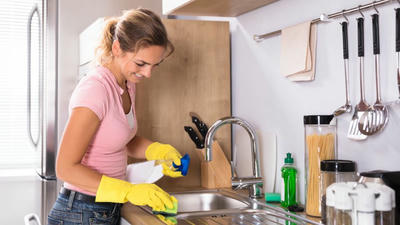The kitchen is often referred to as the heart of the home, where delicious meals are prepared and memories are created. However, it is also a place where foodborne illnesses can thrive if proper hygiene practices are not followed. Maintaining kitchen hygiene is crucial for ensuring the safety and well-being of you and your loved ones. Whether you are a seasoned chef or a novice home cook, understanding and implementing effective kitchen hygiene practices is necessary for a successful cooking experience.
In modern kitchens, the convenience of cooking should never come at the cost of safety, especially when it comes to food hygiene. Preventing cross-contact, which occurs when allergens or harmful bacteria are transferred from one food item to another, is crucial for maintaining a safe cooking environment.
The kitchen sink is one of the most frequently used areas in the home, serving countless functions from food preparation to dishwashing. Over time, it can accumulate grime, stains, and bacteria, making it essential to deep clean this important fixture regularly.



